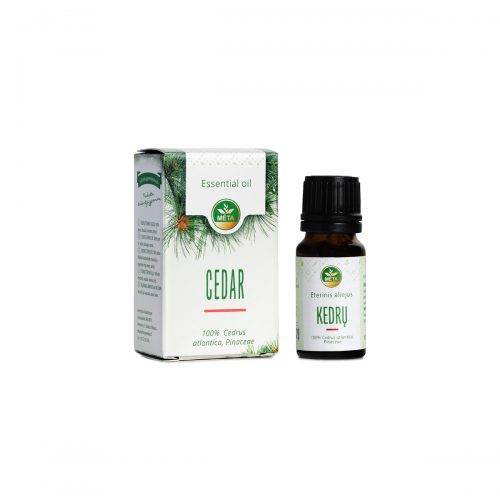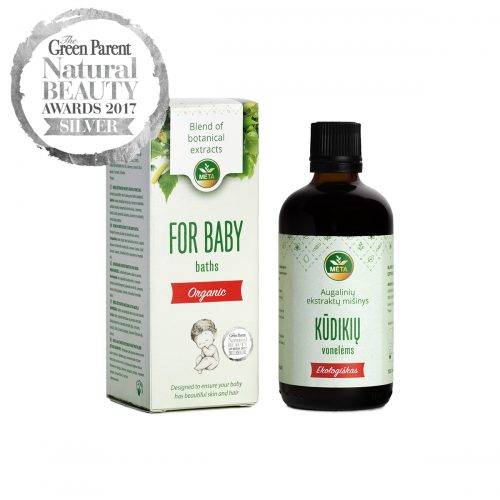English
MINT essential oil, 10 ml
€5.00
„MĖTA“ mint essential oil is a plant odor obtained by the steam distillation of 100% Mentha piperita L mint flowering tops, stems and leaves.
Use: For a fragrant, cooling and toning aromatic bath – 5-9 drops per 100 l of water. A bath enriched with the aroma of essential oil will allow the body to immerse itself in the unique world of plant scents, and the spirit to rise above everyday life. Lying, sitting, as well as hand or foot baths are useful. Since essential oils do not dissolve in water, it is convenient to mix them in a tablespoon of honey before pouring them into the bath. Essential oils cannot be poured into a hot bath, as they will evaporate quickly, the best water temperature is 36-37o C. You should take a shower before the bath, no detergents should be used in the aromatic bath, as they reduce the effectiveness of the procedure. It is advisable to stay in the bath for 10-20 minutes. After the bath, you don’t need to pour water over it, just wipe it off with a soft towel.
Bathing in an aromatic bath is a very pleasant way to relax after a physically and mentally hard day’s work, to warm up in the fresh air. A warm bath with “Mint” essential oil will evaporate fatigue and tension, making room for divine relaxation and bliss…
For massage – 5-6 drops in 20 g (2 tablespoons) of fatty oil. Massage improves blood circulation and reduces stress, and essential oils, given their wonderful properties and scents, can enhance positive emotions even more. So, focus on the whole body or a specific area and treat yourself to a relaxing, soothing or toning essential oil massage. All essential oils are applied to the body only diluted! For dilution at home, it is best to use fatty – first cold-pressed olive oil.
The rule of thumb for essential oils is less is better.
Enjoy spa treatments, baths and massages with our carefully selected essential oils.
Ingredients: Mentha Piperita Oil, Limonene*,Eugenol*, Linalool*
*Regulation (EC) No 1223/2009 of the European Parliament and of the Council on cosmetic products, identifies the following allergens.
„MĖTA“ mint essential oil is a plant odor obtained by the steam distillation of 100% Mentha piperita L mint flowering tops, stems and leaves. The origin of “MĖTA” Mint essential oil is India.
Mint essential oil is made of peppermint (Mentha piperita L.), widely spread in the USA, Western and Eastern Europe and Morocco, using the steam distillation method. Mint essential oil can also be made from other types of mint — Mentha arvensis L., Mentha pulegium L., Mentha longifolia L., etc. Essential oils usually have similar qualities, but a different ratio of the major active substances — menthol and menton.
Mint oil has a fresh, strong aroma and a sweet hue. The essential scent of mint oil is classified as a medium perfume notes – the intensity of the scent remains for 2-3 days.
Mint essential oil cools, refreshes, warms and stimulates. Mint essential oil has a specific odor and effect due to the menthol contained in the essential oil. It is menthol that gives mint oil a cooling, stimulating, warming and refreshing effect. The reason for this paradox is the activation of blood circulation in response to the cooling effect of menthol by applying essential oil to the skin. Mint oil adds a stimulating note to many massage and bath oil blends, but it is recommended to use only one or two drops, otherwise the odor will suppress all other oils used.
Mint oil is suitable for a transition period when one stage of life ends and a new one begins, such as changing school or adapting to a new lifestyle. The use of mint oil will help break away from the past and strengthen the determination and courage to take the next step.
Mint essential oil gives a cleansing, protective or strengthening effect to the oral cosmetics – tooth powder and toothpaste, mouthwashes – and a feeling of freshness and freshness. Inhibits the specific odor and taste of cosmetic ingredients (e.g., chalk taste).
Perfect for use with:
Bergamot and other citrus fruits, Juniper, Eucalyptus, Lavender, Pine, Rosemary essential oils. More»
References:
1. R. Tisserand, R. Young, E. M Williamson “Essential Oil Safety. A Guide for Health Care Professionals”, Churchill Livingstone ELSEVIER, 2014
2. R. Balz “The Healing Power of Essential Oils”, LOTUS LIGHT SHANGRI-LA, Twin Lakes, 1996
3. J. Lawless, The Encyclopedia of Essential Oils (Updated Edition), London: Harper Thorsons, 2014
4. B.M. Lawrence, Essential Oils 1981-1987 (Wheaton: Allured Publishing, 1989), 39-40.
5. P.Dugo, L. Mondello, E. Sebastiani, et al., Identification of Minor Oxygen Heterocyclic Compounds of Citrus Essential Oils by Liquid Chromatography-Atmospheric Pressure Chemical Ionisation Mass Spectrometry. (Journal of Liquid Chromatography & Related Technologies 22, 1999), 2991-3005.
6. B.M. Lawrence, Progress in Essential Oils, Number 2. (Perfumer & Flavorist 25, 2000), 46-49. SCCP, Opinion on Furocoumarins in Cosmetic Products. (Scientific Committee on Consumer Products, 13-Dec.-2005), SCCP/0942/05.
7. Л.ГДудченко, Г.П.Потебня, Н.А.Кривенко «Ароматерапия и аромамасаж», «Максимум», Киев, 1999
| Weight | 0.039 kg |
|---|
Show reviews in all languages (1)
You must be logged in to post a review.














Reviews
There are no reviews yet.